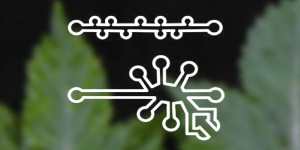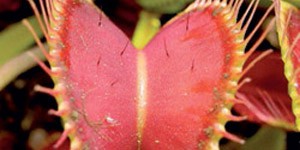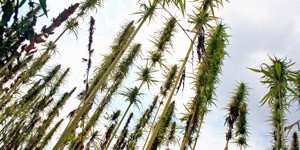Δ-9-Tetrahydrocannabinol, more commonly known THC, is the most important and abundant psychoactive (i.e. perception and mood-altering) component in varieties of the cannabis plant classed as psychoactive. Under international regulations, non-psychoactive varieties –known as hemp– must contain less than 1% THC.
The amount of THC contained in psychoactive plants varies from one strain to another and even within the same strain, depending on growing conditions. The concentration can range from low amounts to over 25% in some varieties.
Psychoactive and Psychotropic Cannabinoids
The three cannabinoids that have a psychoactive effect are THC, cannabinol and delta-8-THC. Of these, the most potent and most abundant is THC. Psychoactivity is the effect sought in recreational -or adult- use.
Other cannabinoids, such as CBD, CBG and THCV, are psychotropic, i.e. they have an affinity for receptors in the central nervous system where they act, but they are not psychoactive – in other words, they do not cause a "trip". Indeed, CBD actually antagonises the psychotomimetic effects of THC.
In any discussion on authorisation of cannabis, THC tends to be the cannabinoid that sparks most controversy, due its memory and perception-altering effects. However, this should not prevent us from recognising its very important therapeutic effects. Indeed, some of the effects that have caused most concern –given possible complications in behaviour and mood– may also be used to therapeutic advantage in certain contexts.
This is the case with the treatment of certain clinical conditions in which, for example, alteration of proprioception (perception of one's own body), may be of great use in treating pain. Likewise, memory alteration can be beneficial for treating post-traumatic stress disorder by attenuating, without erasing, the memory of distress-causing episodes.
The therapeutic window of THC (i.e. the range between the effective dose and the appearance of adverse side effects) is not as wide as in CBD. However, if it is used with precaution and applied in gradually increased doses –to develop tolerance– the incidence of unwanted side-effects for medicinal users can be reduced.
In any case, the adverse effects of THC, like CBD, can be reversed by reducing the dose and interrupting treatment.
Therapeutic properties of THC
The most important therapeutic properties of THC (for which the quality of the evidence varies) are as an:
- analgesic
- anti-inflammatory
- neuroprotector
- antioxidant
- muscle relaxant
- antiemetic and anti-nauseant
- antitumour
- orexigenic (appetite stimulant)
- Reducer of cravings for cocaine, heroin, alcohol and other drugs
As a result, THC is used:
- to treat diseases involving muscle rigidity, such as Parkinson's and multiple sclerosis
- to treat chronic pain resulting from different causes, particularly neuropathic and metastatic pain and secondary pain in osteoarthritis
- as an accompaniment to chemotherapy
- as an antitumour treatment in association with other oncological treatments.
Adverse effects of THC
As well as the effects discussed above, other adverse effects of THC include a feeling of tiredness, drowsiness, dry mouth, headaches, fainting and coordination disorders.


